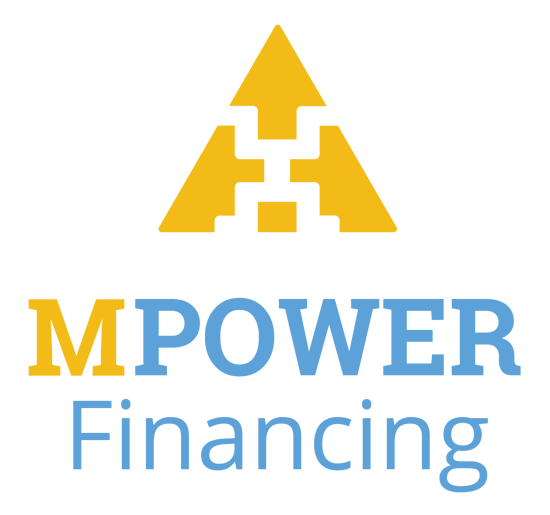Income-Driven Repayment: Is It Right for You?
Can't afford federal student loan payments? Qualify for Public Service Loan Forgiveness? IDR might be right for you — but options will change in 2026.

Many, or all, of the products featured on this page are from our advertising partners who compensate us when you take certain actions on our website or click to take an action on their website. However, this does not influence our evaluations. Our opinions are our own. Here is a list of our partners and here's how we make money.
The federal government currently operates four income-driven repayment, or IDR, plans that can lower your monthly bills based on your income and family size. After making payments for 20 or 25 years, you can get income-driven repayment loan forgiveness.
However, the income-driven repayment program will sunset for new borrowers starting July 1, 2026, as a result of President Donald Trump’s budget reconciliation bill. Borrowers with existing loans may have the option to stay in the program until their loans are repaid.
In the meantime, you can still enroll in an income-driven repayment plan. Switching to one of these plans is usually right for you in the following instances:
- You can’t afford your current payments and want to avoid late payments and student loan default.
- You may qualify for Public Service Loan Forgiveness.
- You have high student loan debt and a low income or are unemployed.
Here’s what to know about the different income-driven plans before you sign up.
Advertisement



Student loans from our partners

on SoFi® website
SoFi® 

Fixed APR
4.24-9.99%
Min. credit score
650
on Earnest website
Earnest 
Fixed APR
4.79-9.99%
Min. credit score
665

on Credible’s website
ELFI 

Best for faster repayment options
Fixed APR
4.88-8.44%
Min. credit score
680
How is Trump’s ‘one big, beautiful bill’ changing income-driven repayment?
Trump’s budget reconciliation bill, signed into law on July 4, 2025, dramatically changes the income-driven repayment system:
No IDR for future borrowers. If you plan to take out a new federal student loan on or after July 1, 2026 cannot access any income-driven repayment plan.
Plan limits for current borrowers. Three of the plans — SAVE, PAYE and ICR — will go away permanently by July 1, 2028. The plan called Income-Based Repayment (IBR) is the only plan that will remain for existing borrowers.
Action needed for existing borrowers. If you want to stay on an income-driven repayment plan, you must sign up for the IBR plan before July 1, 2028. These borrowers will be allowed to remain in IBR until they pay off their loans.
Action needed for parent PLUS loan borrowers. You must consolidate your loans by July 1, 2026. Then you must sign up for the Income-Contingent Repayment (ICR) plan before July 1, 2028. At that point, you’ll be moved onto the IBR plan.
In lieu of income-driven repayment, the Trump administration will introduce a new option called the Repayment Assistance Plan (RAP). This plan will be available starting July 1, 2026. Payments could be higher under the RAP plan, and it will take longer to get loan forgiveness — 30 years, instead of 20 or 25 under existing income-driven repayment plans.
Borrowers on the ICR, PAYE or SAVE plans who don’t enroll in IBR before July 1, 2028 will automatically be moved to the RAP. They’ll be permanently cut out from income-driven repayment.
Parent PLUS borrowers who miss the July 1, 2026 deadline to consolidate will be permanently blocked from income-driven repayment and the RAP. This could make it extremely difficult to repay parent PLUS loans.
Which existing income-driven repayment plan is best for you?
All four existing income-driven repayment plans share some similarities: Each caps payments to between 10% and 20% of your discretionary income and forgives your remaining loan balance after 10 to 25 years of payments. The four plans are:
- Income-Contingent Repayment (ICR). This is the only IDR plan open to borrowers with federal parent PLUS loans.
- Saving on a Valuable Education (SAVE), which replaced the REPAYE plan. This plan is not accepting new enrollment.
The least confusing way to select a plan is to let your servicer place you on the one you qualify for that has the lowest monthly payment. You can choose this option when you submit the income-driven repayment plan application.
Payments under every income-driven plan count toward Public Service Loan Forgiveness, which can forgive your remaining student loan debt after 10 years in an eligible public service job. If you’ll qualify for this program, choosing the plan that offers you the smallest payment is likely your best bet.
Before enrolling in any income-driven plan, plug your loan information into Federal Student Aid’s Loan Simulator. This will give a good idea of your monthly bills, overall costs and forgiveness amounts under each plan.
What about SAVE, the newest income-drive repayment plan?
As of Mar. 27, 2025, no borrowers can newly enroll in SAVE, as a result of ongoing litigation surrounding the repayment plan. Borrowers who were enrolled in SAVE before court orders froze the plan — nearly 8 million people —have been in an interest-free forbearance since the summer of 2024. SAVE borrowers have not owed payments during this time.
On Aug. 1, 2025, interest will start accruing for borrowers in the SAVE plan forbearance.
You must recertify your income and family size every year
To keep your income-driven repayment status you must recertify income-based repayment every year by providing income and family size information, unless you gave consent during the application process for your tax information to be accessed. If so, your recertification will automatically renew. You will receive notice before a new payment amount goes into effect.
If your income changes, your payments will change, too. If you miss the recertification deadline, you’ll have to pay more — likely the standard repayment plan amount — until you re-enroll. Any interest will typically be capitalized, or added to your principal balance, at that point.
Servicers will alert you three months before your recertification deadline. Your income information is due 35 days before the deadline.
Drawbacks of income-driven repayment plans
While income-driven repayment options can make monthly student loan payments more affordable, these programs do have some potential disadvantages.
- You'll pay more interest over time. Income-driven plans can extend your repayment term from the standard 10 years to 20 or 25 years. Since you’ll be repaying your loan for longer, more interest will accrue on your loans. That means you might pay more under these plans in the long run — even if you qualify for forgiveness.
- You may pay taxes on the forgiven amount. If you have a balance left at the end of the repayment term, the forgiven amount could be taxed as income. A temporary provision eliminates federal taxes on forgiven student loans through the end of 2025. If you qualify for Public Service Loan Forgiveness, you won’t be taxed by the federal government, but state tax could apply.
- Your spouse's income could factor into your payment amount. If you're married your spouse's income may also be factored into your student loan payment amount. If you file taxes jointly, your joint income will always be used to calculate payments under any income-driven plan.
IDR waiver counted past payments toward forgiveness
Millions of borrowers benefited from a one-time IDR account adjustment, or waiver, that counted past payments toward the 240 or 300 needed for IDR forgiveness. The adjustment was slated to wrap up in 2024.
The account adjustment was automatic for most, and deferment and forbearance periods counted toward IDR forgiveness. Millions of longtime borrowers received loan forgiveness, and millions more got at least three years of additional credit toward IDR forgiveness.
How to apply for income-driven repayment plans
You can apply for income-driven repayment at studentaid.gov or by contacting your federal student loan servicer and sending them a paper request form. You can change your student loan repayment plan at any time.
To complete the application, you will need to provide information about your family size and your most recent federal income tax return or transcript. If you didn’t file taxes, you’ll need to submit alternate proof of any taxable income you’ve earned within the past 90 days, such as:
- Pay stubs.
- A letter from your employer listing your gross pay.
- A signed statement explaining your income, if formal documentation is unavailable.
Your servicer can put your loans in a temporary forbearance while processing your application. You aren’t required to make payments during forbearance, but interest will accrue on your loan. This increases the amount you owe.
Can’t afford income-driven repayment?
Factors besides your income can affect how income-driven payments are calculated. If your payments end up being too high, the federal government also offers extended repayment and graduated repayment plans, which lower your payments but aren’t based on your income. You may pay more interest under these plans, though, and neither offers loan forgiveness.
Refinancing your student loans with a private lender could also reduce your monthly payments, depending on the new loan’s terms. But refinancing federal student loans can be risky, as you’ll lose access to programs like income-driven repayment and loan forgiveness. Be sure you’re comfortable giving up those options before refinancing.
Article sources
NerdWallet writers are subject matter authorities who use primary,
trustworthy sources to inform their work, including peer-reviewed
studies, government websites, academic research and interviews with
industry experts. All content is fact-checked for accuracy, timeliness
and relevance. You can learn more about NerdWallet's high
standards for journalism by reading our
editorial guidelines.
Related articles
AD
Refinance Your Student Loans with Earnest: smarter rates, total flexibility, no fees.
Check rate
on Earnest's website

AD

Refinance Your Student Loans with Earnest: smarter rates, total flexibility, no fees.
- Fixed APRs starting at 4.79%, Variable Rates starting at 5.88%;
- Customize your term down to the month (5–20 years);
- Skip one payment every 12 months.
Check rate
on Earnest's website
AD
Refinance Student Loans with SoFi:
low rates, flexible terms, no fees.
Check rate
on SoFi®'s website

AD

Refinance Student Loans with SoFi:
low rates, flexible terms, no fees.
- Rates: 4.74-9.99% (fixed) / 5.99-9.99% (variable) APR;
- Terms between 5–20 years, plus features like interest-only SmartStart for residents;
- Zero application/origination/prepayment fees — ever.

Check rate
on SoFi®'s website








